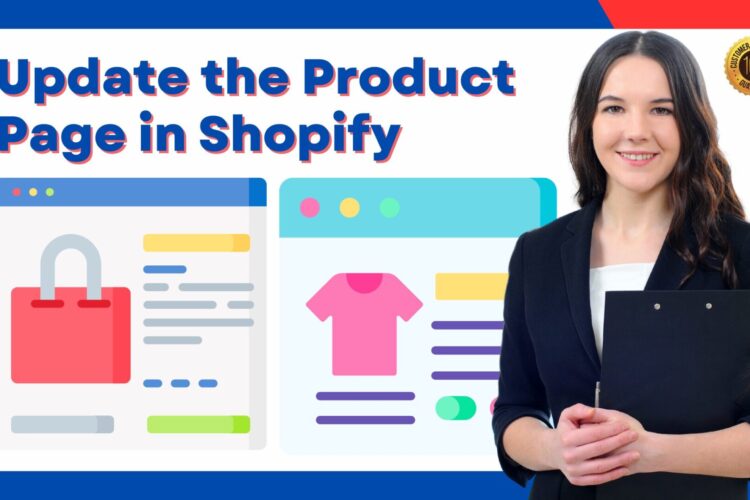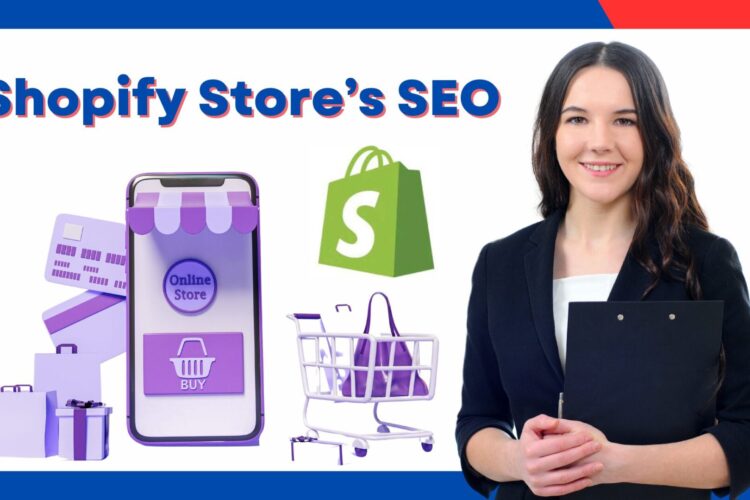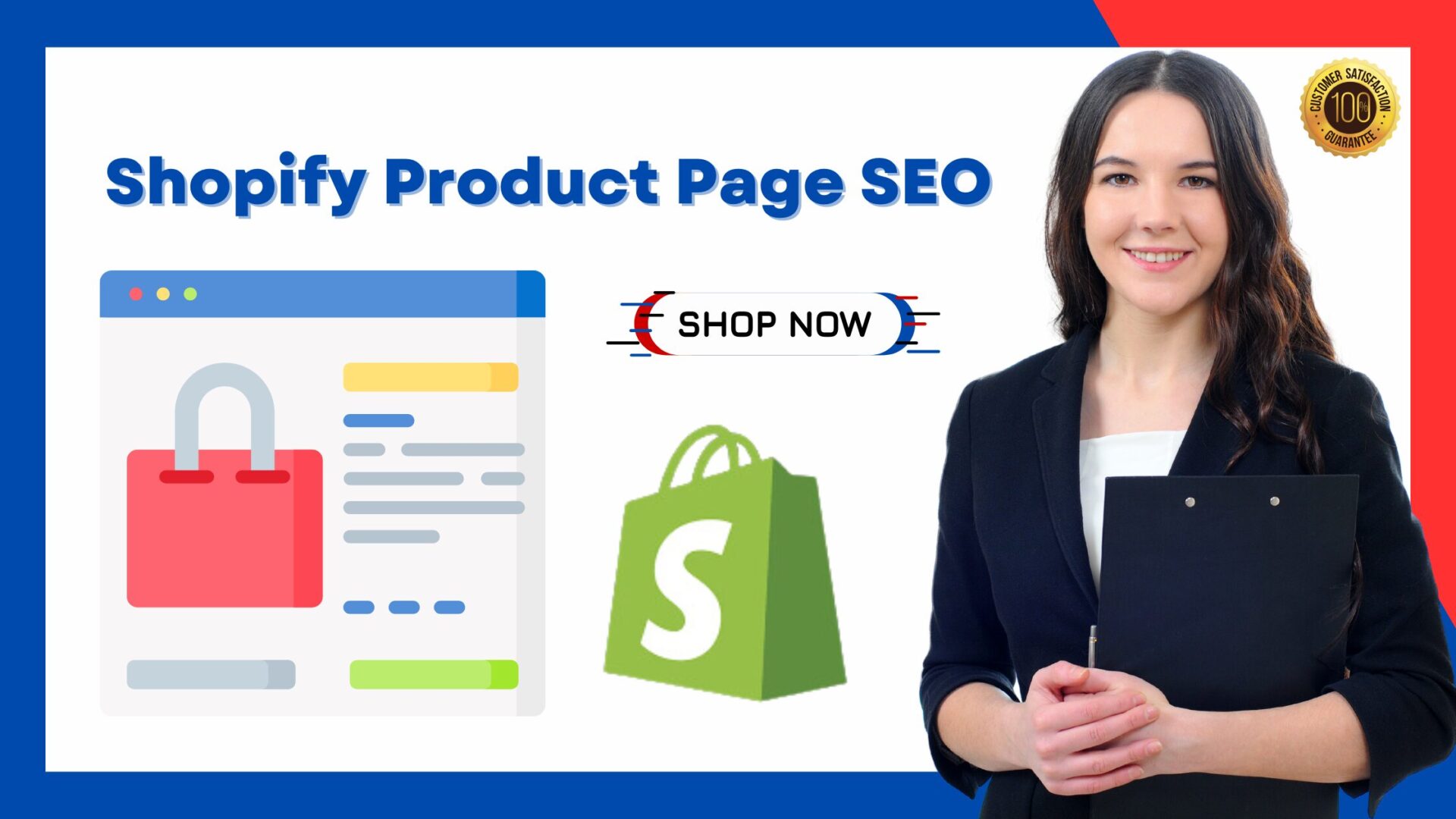
Optimizing your Shopify product page for SEO is important in e-commerce. Effective SEO ensures your products rank higher in search results, attracting 78% more traffic and boosting sales. Here, we will explore strategies for optimizing Shopify product pages, leveraging advanced e-commerce SEO techniques, and providing actionable tips to improve visibility. By following these SEO strategies, you can achieve better rankings, increase conversions, and stay ahead in the digital marketplace.
Quick View
Why Shopify Product Page SEO Matters
Improves Visibility
Product pages optimized for SEO rank higher in search engine results, driving organic traffic. According to BrightEdge’s 2024 reports, 53% of all website traffic originates from organic searches. Optimizing your product pages ensures that your products are easily discoverable by potential customers, directly impacting your e-commerce success.
Increase User Experience
SEO practices like clear descriptions, mobile-friendly designs, and fast-loading pages improve user engagement and satisfaction. A seamless browsing experience keeps users on your site longer, reducing bounce rates and increasing the likelihood of conversions.
Boosts Conversions
Optimized pages with compelling titles, detailed descriptions, and attractive visuals lead to higher click-through and conversion rates. Studies indicate that e-commerce stores with well-optimized product pages see up to a 30% increase in sales.
Key Elements of Shopify Product Page SEO
1. Keyword Research
Effective keyword research is the foundation of product page optimization. Use tools like Google Keyword Planner, Ahrefs, or SEMrush to identify keywords with high search volume and low competition. Focus on long-tail keywords like “e-commerce product page optimization” to attract more targeted traffic. Including these keywords in your content ensures better visibility.
2. Optimized Product Titles
Your product title is one of the first things users see in search results. Include primary keywords naturally and keep titles under 60 characters to avoid truncation in search results.
For example, instead of “Running Shoes,” use “Lightweight Running Shoes for Beginners.”
3. SEO-Friendly URLs
Search engines and users prefer clean and descriptive URLs. Avoid using dynamic URLs with unnecessary parameters.
For example, use example.com/red-running-shoes instead of example.com/product?id=12345.
4. Meta Descriptions
A compelling meta description is crucial for click-through rates. Write descriptions under 160 characters, incorporating target keywords and a call-to-action.
For example: “Discover lightweight running shoes perfect for beginners. Free shipping on orders over $50!”
5. High-Quality Product Descriptions
Unique and keyword-rich product descriptions not only improve SEO but also inform and persuade potential buyers. Address user intent by highlighting features, benefits, and use cases.
For instance, “Our eco-friendly water bottles are BPA-free, durable, and perfect for outdoor adventures.”
6. Optimized Images
Images play a vital role in user engagement and page speed. Compress images using tools like TinyPNG to ensure fast load times.
Add descriptive ALT tags to improve accessibility and help search engines understand image content.
7. Product Reviews and Ratings
Customer reviews build trust and add fresh content to your pages. According to BrightLocal’s 2023 survey, 72% of customers trust online reviews as much as personal recommendations. Encourage reviews to improve user trust and SEO rankings.
8. Internal Linking
Link to related products and collections to improve site navigation and distribute link equity.
For example, link “Lightweight Running Shoes” to a “Best Sellers” collection page.
Advanced Shopify SEO Techniques (in 2025)
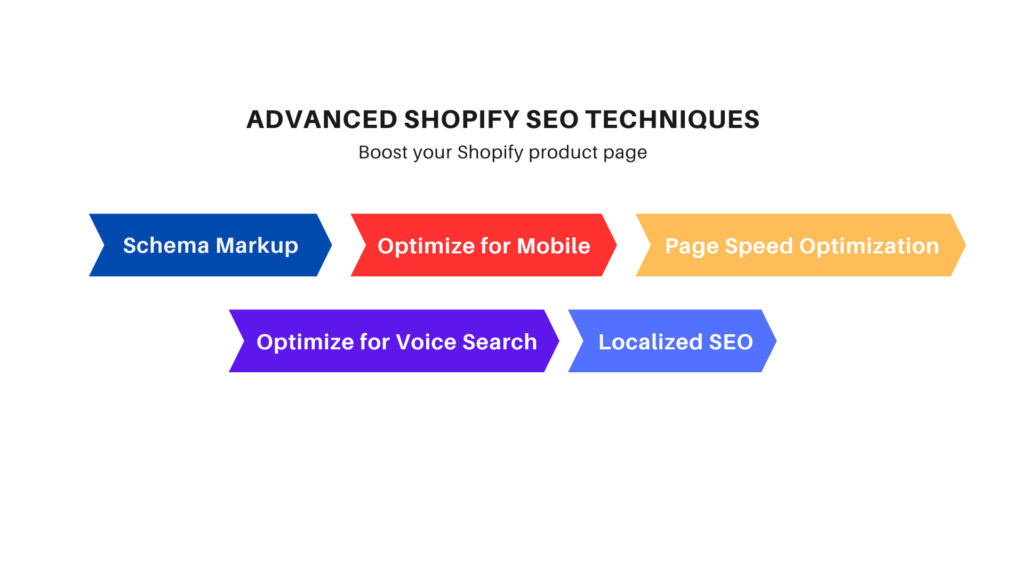
1. Schema Markup
Structured data, or schema markup, enhances rich snippets in search results. Include price, availability, and ratings in your schema to attract more clicks. Use Google’s Structured Data Testing Tool to validate your implementation.
2. Mobile Optimization
Ensure product pages are responsive and easy to navigate on mobile devices. Statista’s 2023 report highlights that mobile devices account for 58% of all e-commerce traffic. Mobile-friendly designs improve user experience and rankings.
3. Page Speed Optimization
Page speed is a ranking factor. Use tools like Google PageSpeed Insights to identify areas for improvement. Compress images, minimize JavaScript, and leverage browser caching to enhance load times.
4. Optimize for Voice Search
With the rise of voice assistants, optimize for conversational queries. For example, target phrases like “What are the best running shoes for beginners?” in your content.
5. Localized SEO
Targeting local audiences can boost relevance. Incorporate region-specific keywords like “Best running shoes in New York” to attract local customers.
If you’re looking for more ways to optimize your store for local languages, check out multi local SEO.
Shopify Product Page Best Practices
Optimize Collections and Categories
Descriptive titles and meta descriptions improve the visibility of collection pages. Add relevant keywords naturally to enhance rankings. For instance, “Men’s Running Shoes Collection” is more SEO-friendly than “Shoes.”
Implement Advanced E-commerce SEO
Combine technical SEO, user experience enhancements, and detailed analytics to refine your strategy. Regular monitoring ensures continued improvement.
Regularly Update Content
Keep your product pages fresh by updating descriptions and images. Highlight seasonal offers and new arrivals to attract recurring customers.
Measuring Success in Shopify Product Page SEO
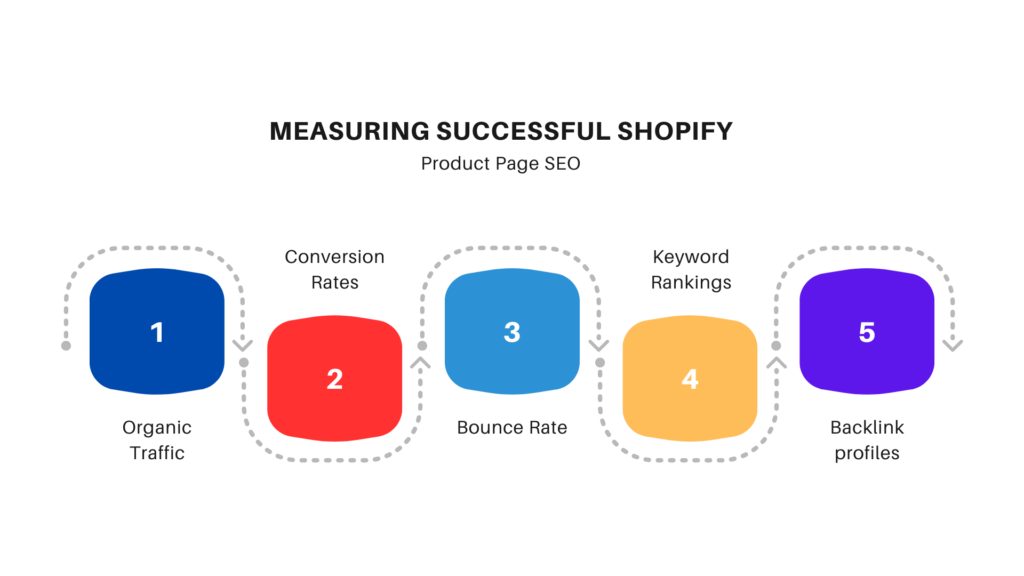
Key Metrics to Monitor
- Organic Traffic: Use Google Analytics to measure traffic from search engines.
- Conversion Rates: Track the percentage of visitors who complete purchases.
- Bounce Rate: Ensure visitors stay and engage with your page content.
- Keyword Rankings: Monitor rankings using tools like Ahrefs or SEMrush.
Tools for Shopify Product Page SEO
1. Ahrefs
Ahrefs is a comprehensive SEO tool that helps with keyword research, backlink analysis, and competitor tracking. For Shopify users, Ahrefs is invaluable for identifying high-performing keywords and analyzing the competition’s strategies.
It also provides detailed reports on traffic trends and site health, allowing you to make informed decisions to improve rankings. The tool’s “Content Explorer” feature helps identify trending topics, giving you ideas for blog posts and product descriptions. Cost: $99/month.
2. SEMrush
SEMrush offers advanced features like site audits, keyword research, and rank tracking. For Shopify stores, it simplifies competitor analysis by identifying their top-performing keywords and backlinks.
SEMrush also includes tools for on-page SEO recommendations, ensuring your product pages are fully optimized. Additionally, the “SEO Writing Assistant” provides real-time tips to improve content quality and keyword usage. Cost: $119.95/month.
3. Yoast SEO for Shopify
Yoast SEO for Shopify streamlines on-page optimization by offering easy-to-use tools for editing meta descriptions, SEO titles, and URLs. It also provides real-time feedback on content readability and keyword density, ensuring your product pages are optimized for both search engines and users. With its integration capabilities, Yoast helps Shopify users improve their overall SEO strategy. Cost: $19/month.
4. TinyPNG
TinyPNG focuses on compressing images without compromising quality, a crucial factor for page speed optimization. Faster-loading pages enhance user experience and positively impact SEO rankings.
By reducing image sizes, TinyPNG ensures your Shopify product pages remain visually appealing while improving performance. This tool is free for basic use, making it an excellent option for budget-conscious users.
5. Google Analytics
Google Analytics is an essential tool for tracking user behavior, traffic sources, and conversion rates. For Shopify store owners, it provides insights into which product pages perform best and where improvements are needed.
By integrating Google Analytics with Shopify, you can monitor organic traffic growth and measure the success of your SEO strategies. Cost: Free tool.
Common Questions
Q: Does product name in TikTok affect SEO?
Yes, product names in TikTok captions can indirectly impact SEO by driving social traffic to your Shopify store.
Q: Does SEO title and product title mean the same thing?
No. The SEO title appears in search engine results, while the product title is displayed on the product page.
Q: Are product tags good for SEO?
Product tags help organize your site but should be used strategically to avoid duplicate content issues.
Q: Do product reviews help SEO?
Yes. Reviews contribute fresh, user-generated content, which improves search rankings and builds trust.
Q: How do I do SEO for Amazon products?
Optimize titles, descriptions, and images using Amazon’s backend keyword tool for additional optimization.



